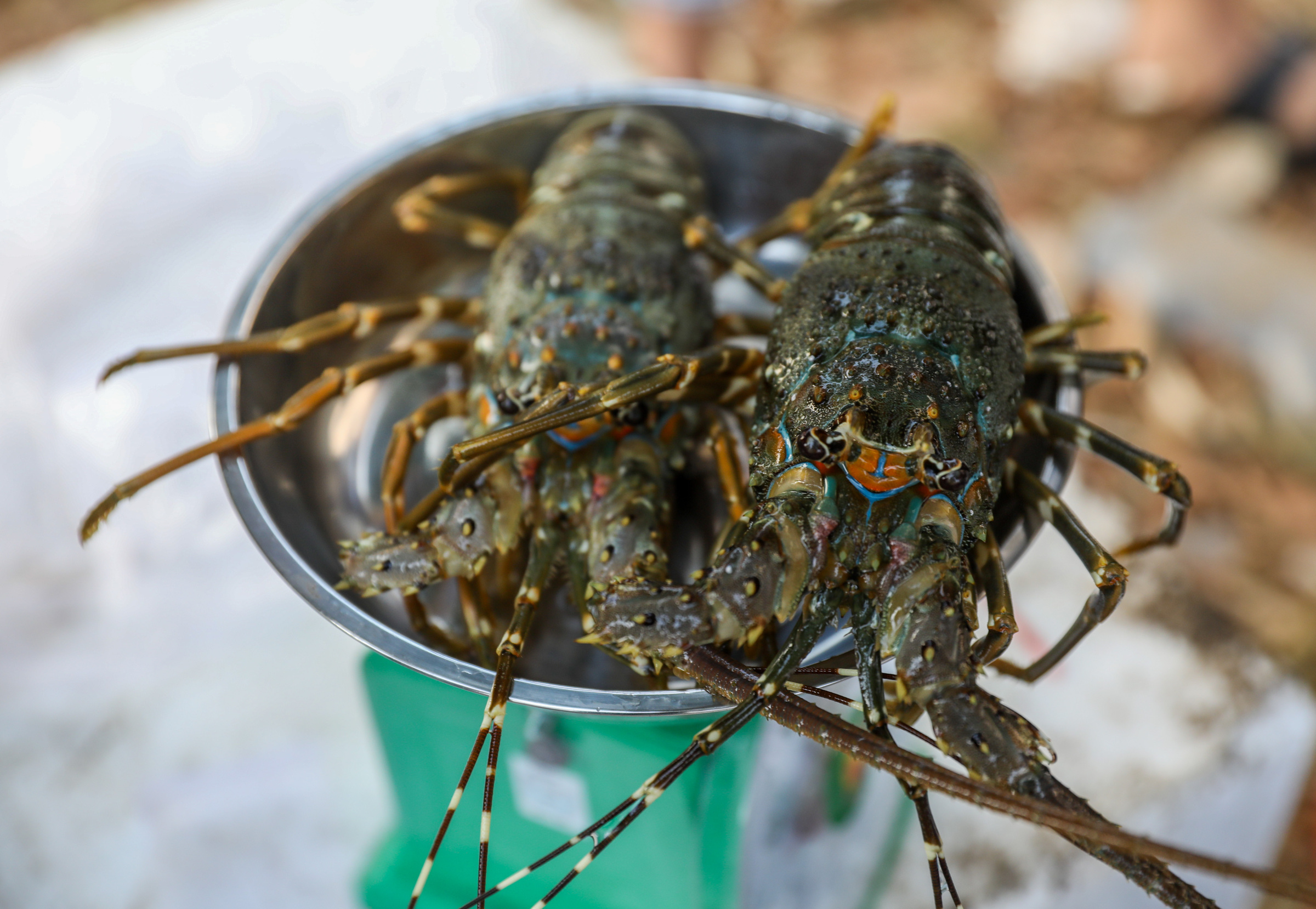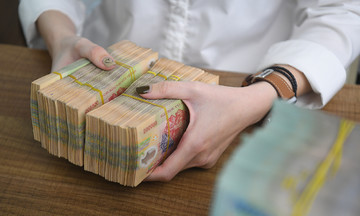These figures were recently released by Vietnam Customs. According to the data, exports to mainland China and Hong Kong account for almost 29% of Vietnam's total shrimp export revenue, making it the fastest-growing market for Vietnamese shrimp this year. In the first half of August alone, export value to this market reached nearly 57 million USD, equivalent to almost 30% of total shrimp exports.
Notably, the types of shrimp exported to China are changing to reflect consumer preferences. Lobster, tiger prawn, and other shrimp varieties have seen triple-digit growth, particularly in the fresh and high-end frozen segments. Black tiger shrimp saw double-digit growth, while whiteleg shrimp exports decreased in raw form but increased in processed products, reflecting a shift towards convenient, value-added goods.
 |
People buying lobster in An Hoi Dong ward (TP HCM). Photo: Quynh Tran |
According to the Vietnam Association of Seafood Exporters and Producers (VASEP), China's strong purchasing power comes as the market is recovering its import demand.
According to Chinese customs data, in the first 7 months of the year, China imported over 519,000 tons of frozen warm-water shrimp, a 2% decrease in volume, but the value increased by 7% to 2.73 billion USD due to a 9% increase in average price to 5.25 USD per kg. In July alone, import volume surged to over 90,000 tons, the highest since the beginning of last year. However, large inventories and a slowdown in the food service industry continue to push down import shrimp prices in China in August, reflecting a risk of short-term saturation in the mainstream segment.
Ecuador still dominates the supply chain with 389,000 tons, equivalent to a 75% market share, thanks to its price advantage and abundant supply. India, the second-largest supplier, saw a 7% decline to 76,000 tons due to difficulties in quality control and production costs. Conversely, smaller suppliers such as Myanmar, Argentina, and Thailand have unexpectedly emerged with strong growth rates.
In this context, VASEP believes that Vietnamese shrimp is finding a different path: instead of competing directly on price in the mainstream segment, Vietnamese businesses are focusing on the premium segment with products such as large black tiger shrimp, live lobster, and deeply processed items. This strategy helps avoid competitive pressure from Ecuador and aligns with the trend of premium consumption among Chinese consumers.
In the short term, VASEP predicts that shrimp exports to China will continue to increase during the year-end holiday season, especially during the Mid-Autumn Festival, New Year's, and Lunar New Year, when demand for gifts and seafood rises. But in the medium term, significant challenges remain as China's domestic shrimp production grows, and Ecuador and India maintain competitive pressure.
To maintain market share, experts suggest that Vietnamese businesses should stick to their strategy of improving quality and diversifying products while strictly adhering to requirements for quarantine, traceability, and packaging and labeling—key factors for a sustainable presence in this market.
Hong Chau












